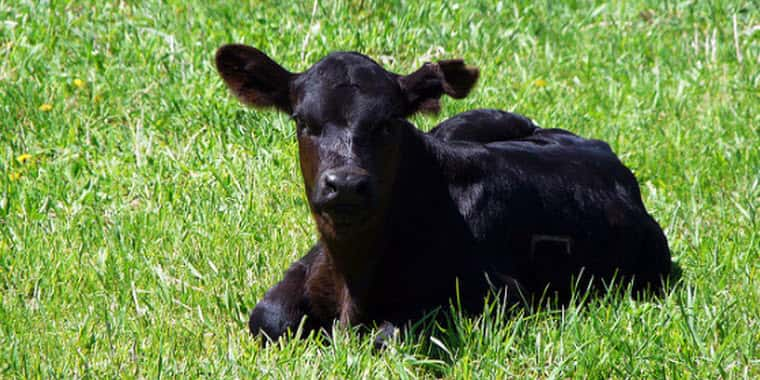North Dakota State University scientists are a step closer to solving the mystery of why 90-plus percent of beef cows become pregnant after artificial insemination, but only 50 to 60 percent still have a viable embryo 30 days later.
The North Dakota Agricultural Experiment Station scientists have developed a technique that allows them to obtain fetal tissue and evaluate factors affecting embryo development in the early part of pregnancy, from days 16 to 50.
“Up until about day seven after fertilization, it’s easy to look at what’s going on,” says Carl Dahlen, a scientist in NDSU’s Animal Sciences Department. “But for the rest of the loss period, it’s like a big black box.”
The scientists are focusing on nutrient transfer to the embryo and development of the placenta (an organ that connects the developing calf to its mother), and how and when those occur. They’re also studying how disruptions in nutrient supply and placental development may cause embryo loss. They found that the transfer changes dramatically during the first 50 days of pregnancy.
“We’re seeing impacts on some of the key indices as early as 16 days after breeding,” Dahlen says.
Days 16 to 50 of pregnancy in cattle are a key time because that’s when the embryo is transitioning into a fetus, according to Joel Caton, another scientist in NDSU’s Animal Sciences Department who is involved in this project. This transition period is critical in development because a great majority of organ systems are in place and differentiated by 50 days after breeding.
While fetuses receive many nutrients through a shared blood supply with their mothers, that’s not the case for embryos. Instead, transporters, or nutrient-transferring tissues, carry specific nutrients to the embryo before a shared blood supply is established.
As part of their research, the NDSU scientists have identified two transporters that had not been identified before in cattle.
“We’ve opened the door on that black box to take a look,” Caton says.
Learning why so many embryos are lost is important because beef production needs to be as efficient as possible if the U.S. is going to help meet the challenge of feeding 9.2 billion people by 2050 with the available resources, he notes.
“There’s no one else in the world who is doing this research,” Dahlen says. “This puts NDSU squarely in the forefront of this research.”
Caton and Dahlen are among nine scientists from campus and the North Dakota Agricultural Experiment Station's Central Grasslands Research Extension Center (CGREC) near Streeter who are working on this issue with assistance from about a dozen graduate students and a few undergraduates.
“This project serves as an excellent example of how RECs and on-campus faculty can work together to accomplish collaborative research projects,” says CGREC Director Bryan Neville, who is one of the scientists involved in the project.
The scientists are using Angus heifers from the CGREC and state-of-the-art technology in NDSU’s Advanced Imaging and Microscopy Core Laboratory, Animal Nutrition and Physiology Center and Animal Science Nutrition Laboratory to aid their research. They also are collaborating with New Mexico State University scientists, who are conducting related research. Scientists from other universities are interested in getting involved as well.
“By understanding the critical stages of early pregnancy, we may be able to help influence management decisions that benefit livestock producers,” Neville says.
One of those management decisions is making sure pregnant livestock have adequate feed so they can meet their metabolic demands and supply embryos with the nutrients they need from the start.
The scientists also hope this research ultimately will lead to a new reference book on the subject of embryo development. Current publications are decades old.
“This is a state-of-the-art reference that probably would stand for an extended period of time, and I’d like North Dakota to be part of that,” Caton says.
In the meantime, several of the students involved in the project have been recognized for their papers, posters and presentations at events such as American Society of Animal Science meetings, the Duncan Scholars poster competition and the International Symposium on Energy and Protein Metabolism and Nutrition in Krakow, Poland.
NDSU scientists initiated this study in 2014 and have obtained a $150,000 U.S. Department of Agriculture seed grant. They also have received financial support from North Dakota’s State Board of Agricultural Research and Education for additional lab work.
Source: NDSU Extension News



